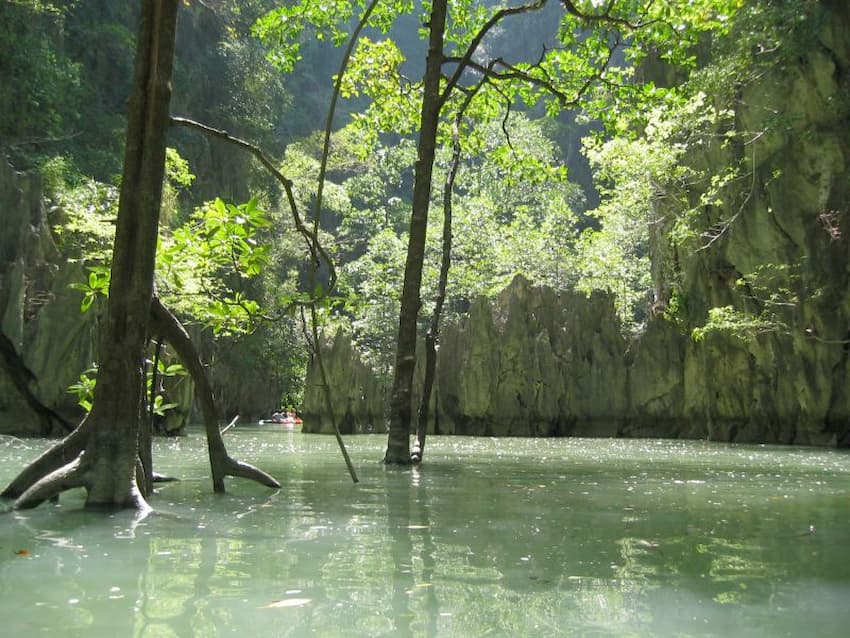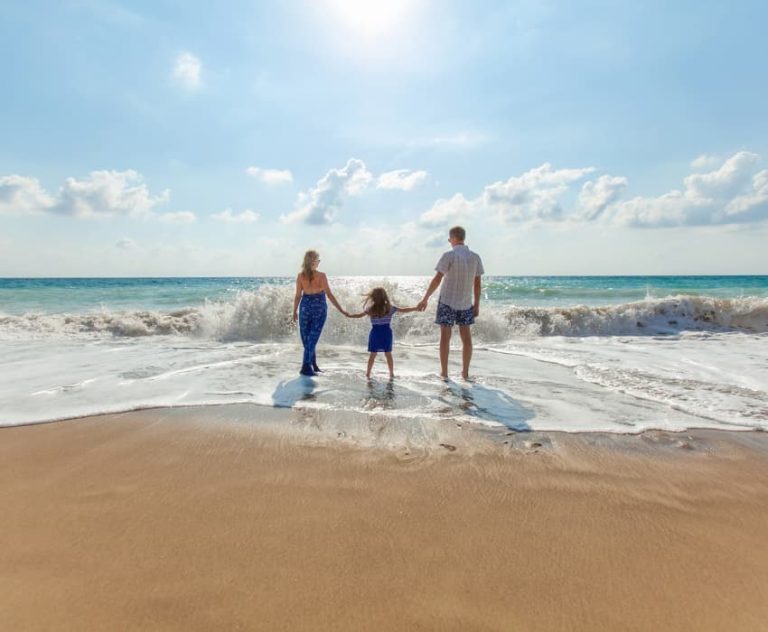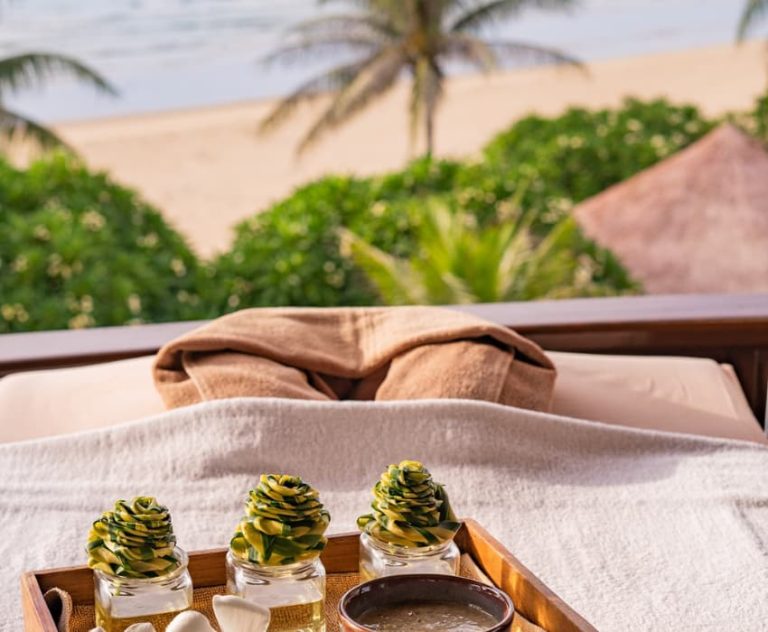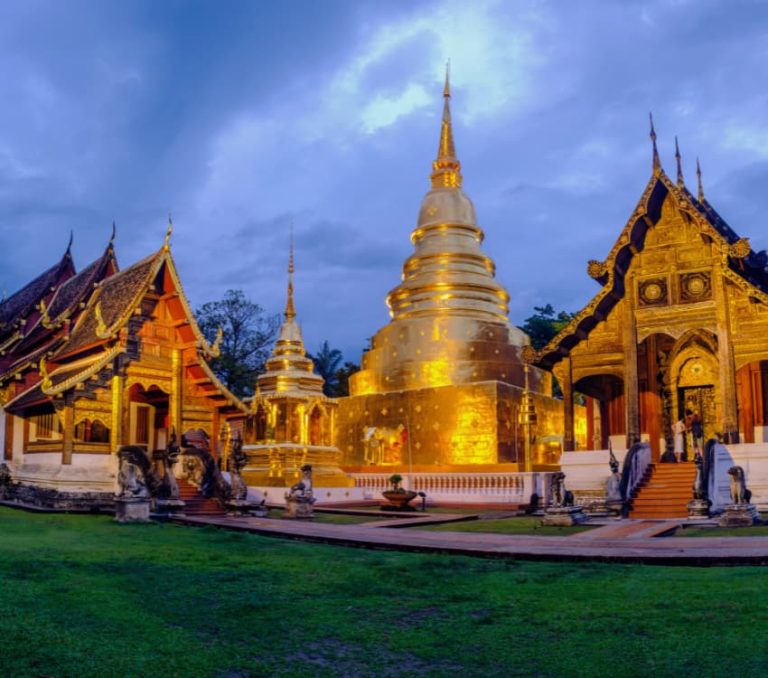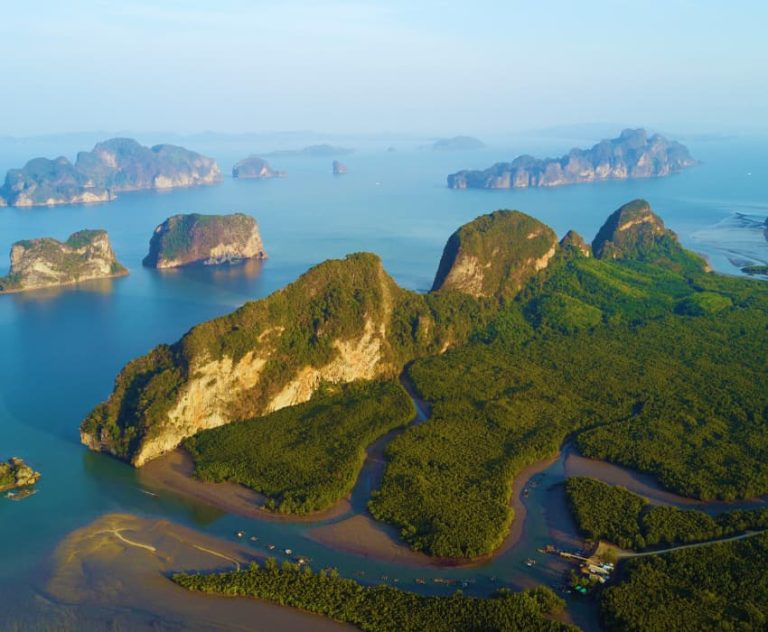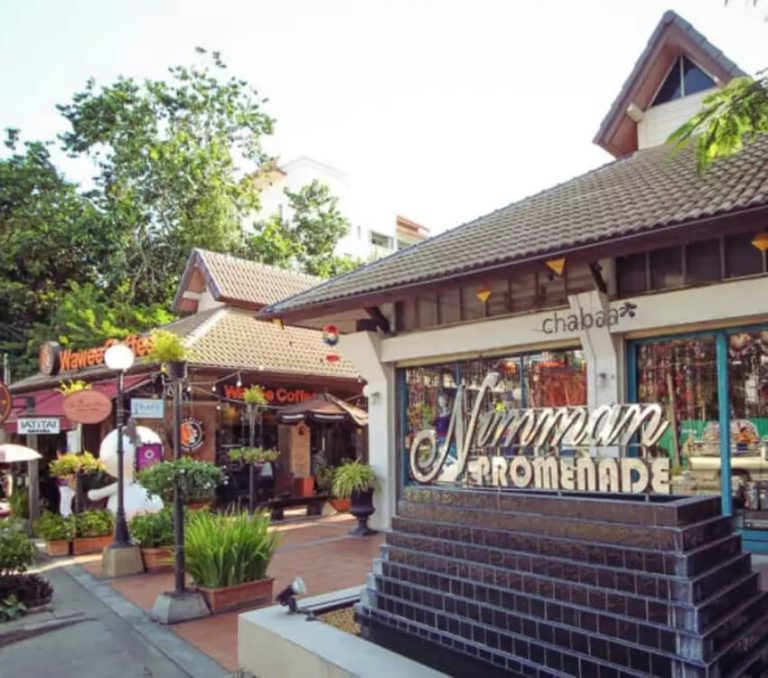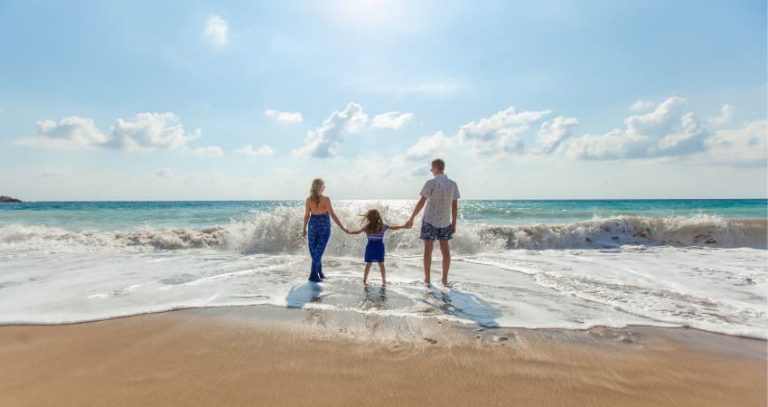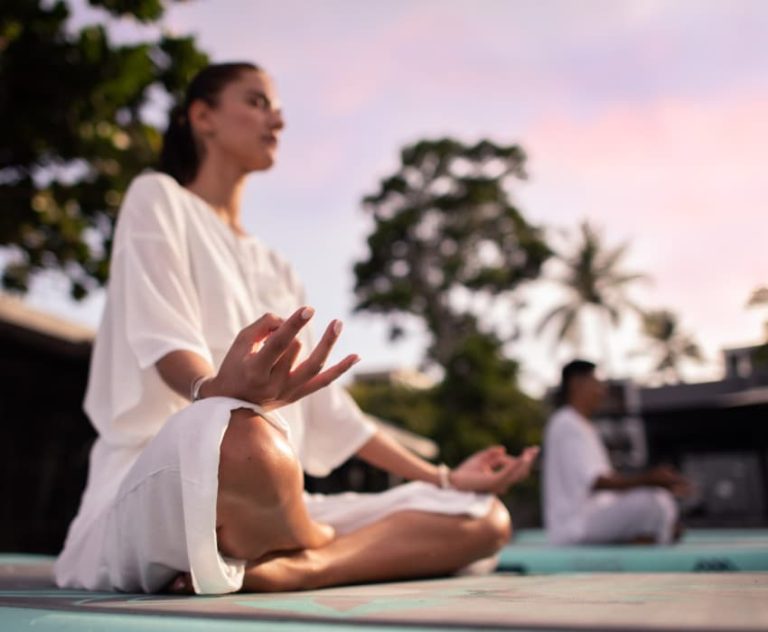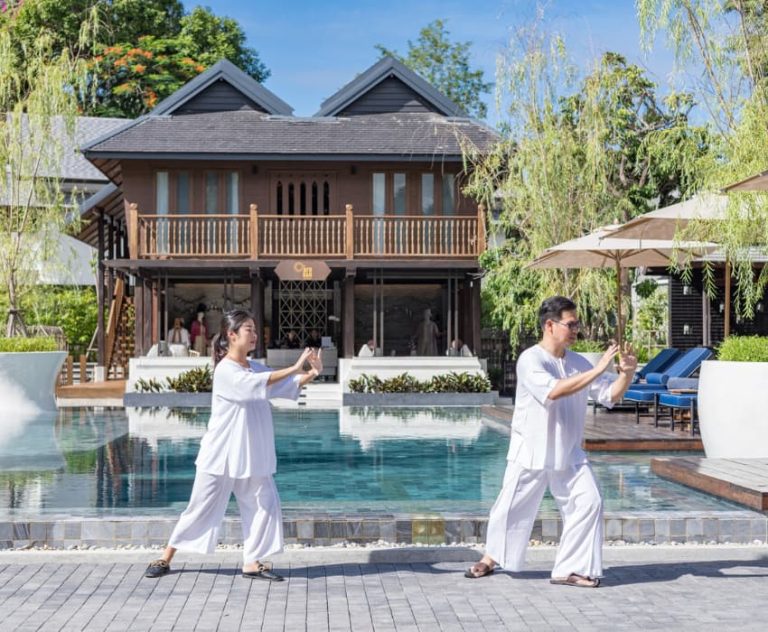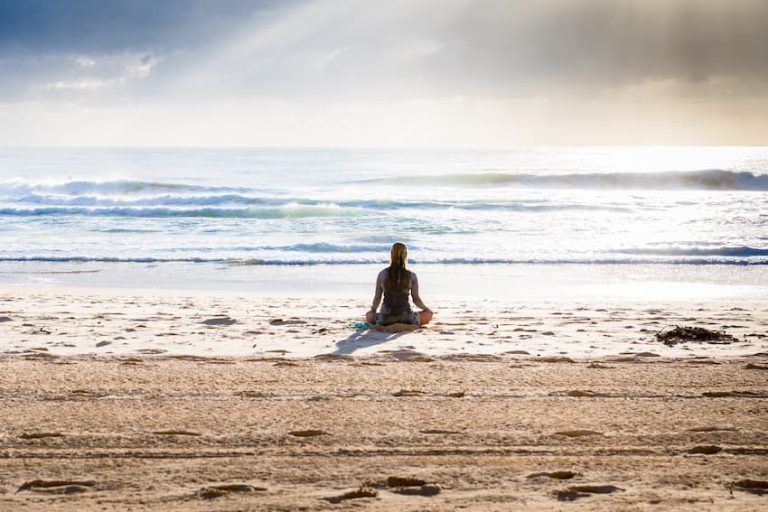Phang Nga Bay is a natural marvel in southern Thailand, where limestone karsts rise dramatically from still emerald waters. Beyond the iconic cliffs and islands, however, lies a thriving, lesser-known ecological treasure: the mangrove forests. These ancient, salt-tolerant trees form a remarkable ecosystem that plays a vital yet quiet role in maintaining the health of both land and sea.
Nestled along the unspoilt Natai Beach, Aleenta Phuket – Phang Nga Resort & Spa is ideally placed for guests to experience this extraordinary environment. The resort’s commitment to sustainable luxury and environmental stewardship makes it more than just a place to stay – it’s a gateway to understanding and appreciating the natural world around us.
Mangroves are Nature’s Survivors
Mangrove trees are astonishing in their adaptability. Unlike most plants, they can grow in brackish water – a mix of fresh and saltwater – which dominates the shallow coastal areas of Phang Nga Bay. They have evolved an intricate filtration system to cope with salt: absorbing water through their roots while actively excreting salt through specialised glands in their leaves and bark.
Even their roots are a masterclass in survival. Mangroves develop complex root systems that perform multiple functions. Some roots grow above the water to take in air, others reach deep into the sediment to draw nutrients. These aerial roots, known as pneumatophores, are visible at low tide, forming eerie forests of natural snorkels poking above the soil.
Their seeds, too, are uniquely adapted. Rather than waiting to germinate in the soil, mangrove seeds begin growing while still attached to the parent tree. Once mature, they drop into the water and drift until they find a suitable spot to take root. This method, known as vivipary, increases their chances of survival and helps the mangrove forests to expand naturally across the bay.
Protecting the Coastline
While mangroves may appear delicate, they are one of the strongest natural defences against coastal erosion. Their roots knit the soil together like a living web, helping to hold sediment in place even as tides, currents, and storms push against the land.
This is particularly important in Phang Nga Bay, where shifting tides and seasonal monsoons can alter the coastline dramatically. Mangrove forests act as a buffer, absorbing the energy of waves and trapping silt. This not only stabilises the shoreline but also helps prevent seawater intrusion into freshwater areas.
In an era where climate change and sea-level rise are genuine threats to coastal communities, the resilience of mangrove ecosystems is being recognised globally. In addition to protecting land, mangroves are effective carbon sinks, storing up to four times more carbon than rainforests per square metre.
The Engine of the Ecosystem
What begins as fallen bark and leaves from the mangrove trees becomes the foundation of the entire food chain in Phang Nga Bay. As this organic matter decomposes, it becomes detritus – a nutrient-rich material that supports microorganisms, algae, and the base layers of aquatic life.
Fiddler crabs are a common sight when the tide retreats. With their distinctive oversized claws and rhythmic movements, they graze on algae and detritus in large numbers. Their presence attracts predators, including fish, birds, and even monkeys.
Juvenile fish take shelter in the submerged roots of mangroves, protected from predators and strong currents. These natural nurseries support a wide variety of fish species, many of which migrate to the open sea as they mature. Without the mangroves, these species would struggle to survive, which would impact local fishing industries and marine biodiversity throughout the region.
Wildlife Above the Waterline
The mangrove forests of Phang Nga Bay are just as alive above the water as they are below it. Birdwatchers can delight in spotting herons, kingfishers, egrets, and sea eagles nesting in the canopy or fishing along the shallows. Thailand’s mangrove forests support more than 200 bird species, making this a year-round destination for nature lovers.
Fruit bats, or flying foxes, are another vital resident. Feeding on mangrove fruits, they act as pollinators and help spread seeds across the region. These bats are not only key to mangrove regeneration, but also vital for maintaining other coastal plant species.
Crab-eating macaques – one of the few primate species that forage in mangrove forests – can be spotted climbing trees and scavenging on the forest floor. Otters sometimes compete with them for crustaceans, adding another layer of interest to the dynamic food web that unfolds daily in this environment.
Remarkably, despite being a swampy coastal zone, mangrove forests have relatively low mosquito populations. This is due to the lack of stagnant water and the presence of insect-eating birds and fish, making your experience of exploring these areas more comfortable than expected.
Human Connection and Conservation
Mangroves have supported local communities in Thailand for generations. Traditionally used for fishing, firewood, and building materials, these forests are now better recognised for their ecological importance and are increasingly protected by conservation programmes.
Aleenta Phuket – Phang Nga Resort & Spa plays an active role in preserving this delicate ecosystem. As a founding member of the Pure Blue Foundation, the resort supports marine and coastal conservation, as well as education initiatives in local schools. Guests at Aleenta directly contribute to this work, with a portion of their stay supporting local environmental efforts.
In line with its sustainability mission, the resort is Travelife Certified, has eliminated single-use plastics, and continues to reduce energy and water consumption across its operations. This commitment ensures that experiences offered at Aleenta are not only luxurious but responsibly managed for future generations to enjoy.
Mangrove Encounters for the Eco Traveller
For guests interested in experiencing Phang Nga’s mangrove ecosystems firsthand, several options await. Local operators offer kayak tours that glide through the quiet canals between the roots. These excursions reveal the true intimacy of the mangrove world – the tangled roots, the birdsong, and the slow rhythm of the tides.
Back at the resort, wellness experiences are deeply inspired by nature. Ayurah Spa & Wellness Centre offers programmes that reflect the environment, from salt glow scrubs using mineral-rich Himalayan salt to nature-immersed practices like Sunrise Hatha Yoga Flow, Tai Chi, and Sound Healing Journeys, which connect guests with the elements.
These wellness offerings align beautifully with the grounding energy found within the mangrove forests. Just as the trees filter salt and offer protection, so too do Aleenta’s wellness retreats focus on balance, detoxification, and emotional renewal.
Sustainable Journeys and Responsible Exploration
Visitors are encouraged to explore the mangrove forests with respect and awareness. This includes:
- Following boardwalks or guided paths
- Using reef-safe sunscreen
- Taking only photos and leaving no trace
Aleenta’s guests are welcome to join bi-monthly beach clean-ups, where staff and fellow travellers come together to protect the coastline and learn more about environmental preservation.
As a mindful traveller, your experience of the mangroves goes beyond observation – it becomes a gentle exchange with nature, one that leaves both you and the land a little better for it.
Reconnecting with the Natural World
There is a quiet rhythm to life in the mangroves. It moves with the tides, breathes with the wind, and shelters life with an unspoken resilience. For those wishing to escape the pace of urban life, spending time in or near these forests can be deeply restorative.
Whether floating silently in a kayak through a tree-lined channel, watching the orange flash of a fiddler crab, or simply standing barefoot on the shore listening to the birds, Phang Nga’s mangrove ecosystem offers something rare – a sense of presence.
Guests of our boutique beach resort in Phang Nga have the chance not just to witness this, but to become a part of it, even for a short while. Here, luxury and nature do not compete; they complement one another. And from that harmony, actual well-being can emerge.
Related Articles
- Exploring Phang Nga Bay
- Sea Caves in Phang Nga Bay
- Islands in Phang Nga Bay
- Visiting Phang Nga Town
- Phang Nga Bay Skywalk at Samet Nangshe
Prefer an AI Summary?
Aleenta Phuket
Phang Nga Resort & Spa
Phang Nga Resort & Spa
33 Moo 5, Khok Kloi,
Takua Thung, Phang Nga
82140 Thailand
T: +66 (0) 76 580 333

